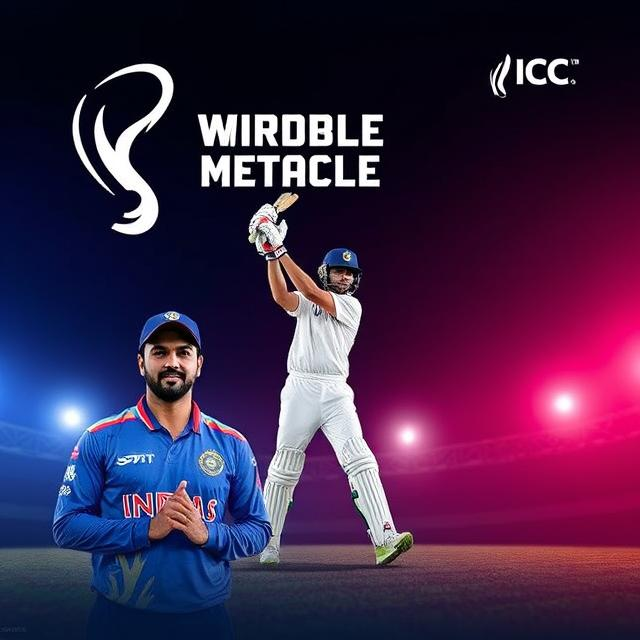Cricket India Pakistan: A History of Fierce Rivalry

Cricket India Pakistan: A History of Fierce Rivalry
The clash of cricketing titans – India and Pakistan – evokes images of packed stadiums, passionate crowds, and nail-biting finishes. More than just a sporting contest, this rivalry embodies the intricate tapestry of history, culture, and shared, often strained, heritage between these two nations. This article delves deep into the rich history of the India-Pakistan cricket rivalry, exploring its evolution from early beginnings to the intense global spectacle it is today.
This rivalry transcends the boundaries of the game, reflecting the complex political and social dynamics between the two countries. We will explore the key moments, the iconic players, and the underlying motivations that make this contest so compelling. Are you ready to step back in time and witness the evolution of this legendary rivalry?
Early Encounters: Laying the Foundation
The India-Pakistan cricket rivalry, as we know it, began with the birth of Pakistan itself in 1947. The very first encounter between the two nations was charged with the weight of a newly formed nation, a turbulent political atmosphere, and a powerful desire to define a national identity through the crucible of sporting competition. The early matches, however, were more than just contests; they were symbolic representations of the hopes and aspirations of millions.
The initial matches were often marred by political tensions, but even in those early days, glimpses of the electrifying drama that would come to characterize this rivalry emerged. The intensity and passionate debates surrounding the matches showcased the deep-seated and evolving desires of the cricketing communities of both nations.
The Rise of Titans: Defining Legends
The 1950s and 1960s saw the emergence of iconic cricketers from both nations, adding a layer of personal brilliance and drama to the already intense rivalry. Names like Hanif Mohammad, Gulam Ahmed, Fazal Mahmood, and Kapil Dev – to name just a few – became household names, their performances inspiring generations of cricket fans on both sides of the border.
From the meticulous batsmanship of Mohammad Azharuddin to the unorthodox bowling prowess of Wasim Akram and the consistent success of Sachin Tendulkar, the rivalry attracted global attention and solidified its position as a pivotal part of the cricketing landscape.
Each generation witnessed the rise of new stars, who further fueled the already passionate rivalry. The stories of their triumphs and agonies, on the field and beyond, added another layer of depth to this already fascinating contest.
The Modern Era: Global Spectacle
The modern era brought with it a wave of changing strategies, technological advances, and a burgeoning global audience eager to witness this cricketing epic. Matches became major global events, attracting enormous television viewership and capturing the attention of sports enthusiasts worldwide. This global reach transformed the rivalry from a purely regional contest into a truly international spectacle, showcasing the cultural dynamism and global engagement of both nations.
The matches became spectacles, and the strategies employed by both teams reflected a growing understanding of the global game and the expectations of the fans. A wave of new talents rose on both sides of the border, further adding to the thrilling dynamics of the competition.
Beyond the Field: Cultural Impact
The India-Pakistan cricket rivalry is more than just a sporting event; it’s a reflection of the cultural and historical intersection of these two nations. The songs, the slogans, the chants – all are integral parts of the experience. The emotional intensity, and the stories spun around each match, serve as a powerful reminder of the shared and sometimes divergent histories.
For millions, this rivalry is a source of deep national pride, a moment to unite around a shared passion. Beyond the field, it influences fashion, social media trends, and cultural discussions throughout the year. The fervent, often emotionally charged, nature of the matches resonates with their respective communities, shaping the conversations and experiences within each nation.
Controversies and Tensions: The Shadow of Politics
While the rivalry is often exhilarating, it’s also shadowed by the inherent complexities of political relations between the two countries. Tensions and controversies have sometimes marred the sporting event, introducing an element of political undercurrent. The delicate balance between intense competition and diplomatic relations often creates a dynamic and complex narrative.
However, it is imperative to highlight that despite these challenges, the passion and excitement generated by this rivalry has not only transcended the geopolitical tensions but has also provided a forum for fans on both sides to interact.
The Future of the Rivalry
Looking ahead, the India-Pakistan cricket rivalry promises to remain a cornerstone of international cricket for years to come. The passion, the history, and the sheer global spectacle will continue to draw massive attention. What new chapters await these two nations on the cricket field?
The rivalry is a testament to the enduring human fascination with competition and the compelling narratives it can create. As the game evolves, this rivalry will likely adapt and continue to captivate audiences worldwide. Will new records be broken? Will new strategies emerge? Only time will tell.
The enduring legacy of this rivalry lies not only in the thrilling on-field action but also in the profound cultural and historical context it represents. From the early days to the present, the India-Pakistan cricket rivalry remains a powerful symbol of shared heritage and a compelling example of the interplay between sport, culture, and national identity.
Note: This article is intended to be an informative and engaging exploration of the history of cricket rivalry between India and Pakistan. It does not express any political opinions or positions.
Further Reading:
- Explore specific match reports to delve deeper into the history of particular matches
- Research the biographies of key players from both nations
- Read articles discussing the cultural impact of the rivalry within respective communities